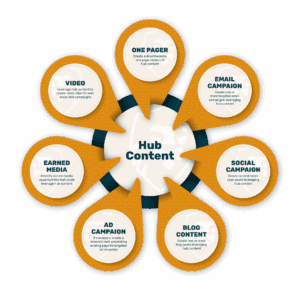By: Aaron Stern & Téa Tetting
In the ever-evolving digital landscape, Search Engine Optimization (SEO) has transformed from a technical afterthought to a critical communication strategy. As businesses compete for online visibility, understanding SEO is no longer optional—it’s essential.
The Anatomy of a Winning SEO Strategy
A robust SEO approach isn’t about quick fixes or magical solutions. It’s a strategic, methodical process that requires careful planning and execution. Here’s what successful SEO looks like in 2025:
1. Set the Foundation
Before diving into keywords and content, successful Search Engine Optimization starts like any other communication effort—with a plan. Who do you want to come to your website? What is it that you are uniquely positioned to offer your audience? If you’re successful, what do you want them to do? What are your success metrics?
2. Mind the Low Hanging Fruit
Google Maps / Google Business Profile is one of the most prominent results when someone googles an organization. Is your organization’s profile up-to-date, relevant and engaging? Is your location listed and visible so a user can easily find you?
Also, make sure you’re thinking about location in your keyword targets. Where is your audience? Is it national? Great. Is it local? No problem. Just make sure to communicate it in key words.
3. Write for Both Humans and Search Engines
Contrary to popular belief, SEO isn’t about tricking search algorithms—it’s about creating genuinely valuable content. If your content is solid, SEO will come naturally. A few things to think about: Use the words your audience uses. Think about what they’ll type in to find you and use those words. Also, think about the hierarchy of your content. Use titles and section headers strategically—Google prioritizes these page elements over others.
Be sure to avoid the pitfall of having all your pages point to the same keyword. Each page should have a specific keyword focus, to avoid competing with your own content!
4. Break Down Silos
How good is an SEO strategy if the people writing your web copy and blogs have no idea about it? It may seem basic, but you would be surprised how often “web tactics” are siloed from “other communications and marketing tactics.” Get everyone on the same page, to drive more traffic to yours!
5. Backlinks Help!
Links to your page from other, reputable websites go a long way as search engines view these links as signals of trust and authority You know what often makes for an authoritative website? A media outlet. Earned media campaigns that result in stories that link back to your website are a great way to drive Off-Page SEO. The more credible websites that point to your content, the more likely Google is to view your site as authoritative and relevant.
But this is where alignment becomes essential. If your PR or communications team is running media outreach without coordinating with your SEO goals, you’re likely missing out on valuable link-building opportunities. This is exactly why breaking down silos between your SEO, content, and communications efforts is so critical!
6. Track Success and Be Nimble
What is the success measure you set up when you built your strategic SEO plan? Was it organic website traffic, google search sessions, conversion rates, page one rankings? All of the above? Whatever it was, track it regularly and be nimble in how you respond to what you find.
The Future of SEO: A Holistic Approach
Search Engine Optimization (SEO) in 2025 is about more than just rankings—it’s about creating a comprehensive online presence that genuinely serves your audience. By understanding search algorithms, creating valuable content, and staying adaptable, organizations can transform their digital communication strategy to drive not just any traffic, but the right traffic.
Not sure where to start? Let’s talk.
P.S. Curious about AI’s impact on SEO? Check out our other post, The Changing Landscape: AI and SEO.



